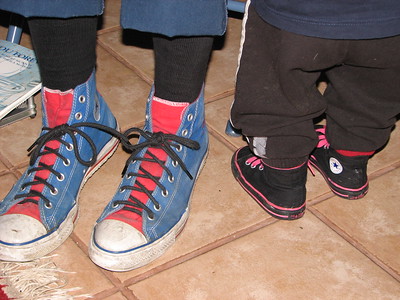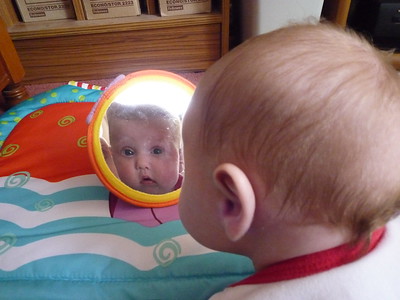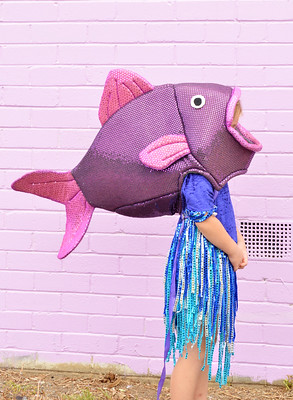Archive for May, 2021
Letting Yourself Be Inspired by Others
 When you try something new, check to see who has done something similar. Decompose their design approach. What were they trying to achieve? What outcome were they looking for? Who were their target customers? Do this for at least three existing designs – three real examples that are for sale today.
When you try something new, check to see who has done something similar. Decompose their design approach. What were they trying to achieve? What outcome were they looking for? Who were their target customers? Do this for at least three existing designs – three real examples that are for sale today.
Here’s a rule to live by: When trying something new, don’t start from scratch.
What you are trying to achieve is unique, but has some commonality with existing solutions. The outcome you are looking for is unique, but it’s similar to outcomes others have tried to achieve. Your target customers are unique, but some of their characteristics are similar to the customers of the solutions you’ll decompose.
Here’s another rule: There are no “clean sheet” sheet designs, so don’t try to make one.
There was an old game show called Name That Tune, where contestants would try to guess the name of a song by hearing just a few notes. The player wins when they can name the tune with the *fewest* notes. And it’s the same with new designs – you want to provide a novel customer experience using the fewest new notes.
A rule: Reuse what you can, until you can’t.
Because the customer is the one who decides if your new offering offers them new value, the novel elements of your design don’t have to look drastically different in a side-by-side comparison way. But the novel elements of your offering do have to make a significant difference in the customer’s life. With that said, however, it can be helpful if the design element responsible for the novel goodness is visually different from the existing alternatives. But if that’s not the case, you can add a non-functional element to the novelty-generating element to make it visible to the customer. For example, you could add color, or some type of fingerprint, to the novel element of the design so that customers can see what creates the novelty for them. Then, of course, you market the heck out of the new color or fingerprint.
A rule: It’s better to make a difference in a customer’s life than, well, anything else.
Don’t be shy about learning from what other companies have done well. That’s not to say you should violate their patents, but it’s a compliment when you adopt some of their best stuff. Learn from them and twist it. Understand what they did and abstract it. See the best in two designs and combine them. See the goodness in one domain and bring it to another.
Doing something for the first time is difficult, why not get inspiration from others and make it easier?
“two of a kind” by anathea is licensed under CC BY 2.0
The One Thing That’s Always in the Way
 If you could get another good job at the drop of a hat, how would you work differently? Would you speak your mind or bite your tongue?
If you could get another good job at the drop of a hat, how would you work differently? Would you speak your mind or bite your tongue?
If you didn’t care about getting a promotion, would you succumb to groupthink or dissent?
If your ego didn’t get in the way, would you stop following the worn-out recipe and make a new one?
If you don’t judge yourself by the number of people who work for you, would your work be better? Would you choose to work on different projects? How do you feel about that?
If you knew your time at the company was finite, how would your contribution change? Who would you stop working with? Who would you start working with? Wouldn’t that feel good?
If you didn’t care about your yearly rating, wouldn’t your rating improve?
If you cared more about helping others, wouldn’t your talents (and the returns) be multiplied?
If your time horizon was doubled, wouldn’t work on projects that are important at the expense of those that are urgent?
If your ego didn’t block you from working on projects that might fail, wouldn’t you work on projects that could obsolete your best work?
If you cared about the long-term success of the company, wouldn’t you work more with young people to get them ready for the next decade?
If you cared solely about doing the right projects in the right way, wouldn’t you help your best team members move to the most important projects, even if that meant they worked for someone else?
If you cared about helping people develop, would you formalize their development areas and help them grow, or take the easy route and let them flounder?
If you didn’t care about getting the credit, how would you and your work be different? Would the company be better for it? How about your happiness?
If you declined every other meeting and just read the meeting minutes, would that be a problem? And even if there are no meeting minutes to read, don’t you think that you’d get along just fine? And don’t you think you’d get more done?
What would you have to change to work more often with young people?
What would you have to change so your best people could be moved to the most important projects?
What would you have to change so you’d dissent when that’s what’s needed?
What would you have to change to develop others, even if it cost you a promotion?
What would you have to change so you could ditch the urgent projects and start the meaningful ones?
What would you have to change so you could spend more time developing young talent?
What would you have to change so you could attend fewer meetings and make more progress?
What would you have to change so you could work on the most outlandish projects?
What’s in the way of looking inside and figuring out how to live differently?
If you were able to change, who would you start work with? Who would you stop working with? Which projects would you start and which would you stop? Which meetings would you skip? Who are the three young people you’d help grow?
If you were able to change, would you be better for it? And how about the people that work with you? And how about your family? And wouldn’t your company be better for it?
So I ask you – What’s in the way? And what are you going to do about it?
“Evie looking in the mirror” by Ambernectar 13 is licensed under CC BY-ND 2.0
What Good Coaches Do
 Good coaches listen to you. They don’t judge, they just listen.
Good coaches listen to you. They don’t judge, they just listen.
Good coaches continually study the game. They do it in private, but they study.
Good coaches tell you that you can do better, and that, too, they do in private.
Good coaches pick you up off the floor. They know that getting knocked over is part of the game.
Good coaches never scream at you, but they will cry with you.
Good coaches never stop being your coach. Never.
Good coaches learn from you, and the best ones tell you when that happens.
Good coaches don’t compromise. Ever.
Good coaches have played the game and have made mistakes. That’s why they’re good coaches.
Good coaches do what’s in your best interest, not theirs.
Good coaches are sometimes wrong, and the best ones tell you when that happens.
Good coaches don’t care what other people think of them, but they care deeply about you.
Good coaches are prepared to be misunderstood, though it’s not their preference.
Good coaches let you bump your head or smash your knee, but, otherwise, they keep you safe.
Good coaches earn your trust.
Good coaches always believe you and perfectly comfortable disagreeing with you at the same time.
Good coaches know it’s always your choice, and they know that’s how deep learning happens.
Good coaches stick with you, unless you don’t do your part.
Good coaches don’t want credit. They want you to grow.
Good coaches don’t have a script. They create a custom training plan based on your needs.
Good coaches simplify things when it’s time, unless it’s time to make things complicated.
Good coaches aren’t always positive, but they are always truthful.
Good coaches are generous with their time.
Good coaches make a difference.
How do you measure your people?
 We get what we measure and, generally, we measure what’s easy to measure and not what will build a bridge to the right behavior.
We get what we measure and, generally, we measure what’s easy to measure and not what will build a bridge to the right behavior.
Timeframe. If we measure people on a daily pitch, we get behavior that is maximized over eight hours. If a job will take nine hours, it won’t get done because the output metrics would suffer. It’s like a hundred-meter sprint race where the stopwatch measures output at one hundred meters. The sprinter spends all her energy sprinting one hundred meters and then collapses. There’s no credit for running further than one hundred meters, so they don’t. Have you ever seen a hundred-meter race where someone ran two hundred meters?
Do you want to sprint one hundred meters five days a week? If so, I hope you only need to run five hundred meters. Do you want to run twenty-five miles per week? If so, you should slow down and run five miles per day for five days. You can check in every day to see if the team needs help and measure their miles on Friday afternoon. And if you want the team to run six miles a day, well, you probably have to allocate some time during the week so they can get stronger, improve their running stride, and do preventative maintenance on their sneakers. For several weeks prior to running six miles a day, you’ve got to restrict their running to four miles a day so they have time to train. In that way, your measurement timeframe is months, not days.
Over what timeframe do you measure your people? And, how do you feel about that?
Control Volume. If you have a fish tank, that’s the control volume (CV) for the fish. If you have two fish tanks, you two control volumes – control volume 1 (CV1) and control volume 2 (CV2). With two control volumes, you can optimize each control volume independently. If tank 1 holds red fish and tank 2 holds blue fish, based on the number of fish in the tanks, you put the right amount of fish food in tank 1 for the red fish and the right amount in tank 2 for the blue fish. The red fish of CV1 live their lives and make baby fish using the food you put in CV1. And to measure their progress, you count the number of red fish in CV1 (tank 1). And it’s the same for the blue fish in CV2.
With the two CVs, you can dial in the recipe to grow the most red fish and dial in a different recipe to grow blue fish. But what if you don’t have enough food for both tanks? If you give more food to the blue fish and starve the red fish, the red fish will get angry and make fewer baby fish. And they will be envious of the blue fish. And, likely, the blue fish will gloat. When CV1 gets fewer resources than CV2, the fish notice.
But what if you want to make purple fish? That would require red fish to jump into the blue tank and even more food to shift from CV1 to CV2. Now the red fish in CV1 are really pissed. And though the red fish moved to tank 2 do their best to make purple guppies with the blue fish, neither color know how to make purple fish. They were never given the tools, time, and training to do this new work. And instead of making purple guppies, usually, they eat each other.
We measure our teams over short timeframes and then we’re dissatisfied when they can’t run marathons. It’s time to look inside and decide what you want. Do you want short-term performance or long-term performance? And, no, you can’t have both from the same team.
And we measure our teams on the output of their control volumes and yet ask them to cooperate and coordinate across teams. That doesn’t work because any effort spent to help another control volume comes at the expense of your own. And the fish know this. And we don’t give them the tools, time, and training to work across control volumes. And the fish know this, too.
“Purple fish” by The Dress Up Place is licensed under CC BY-SA 2.0
 Mike Shipulski
Mike Shipulski